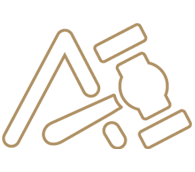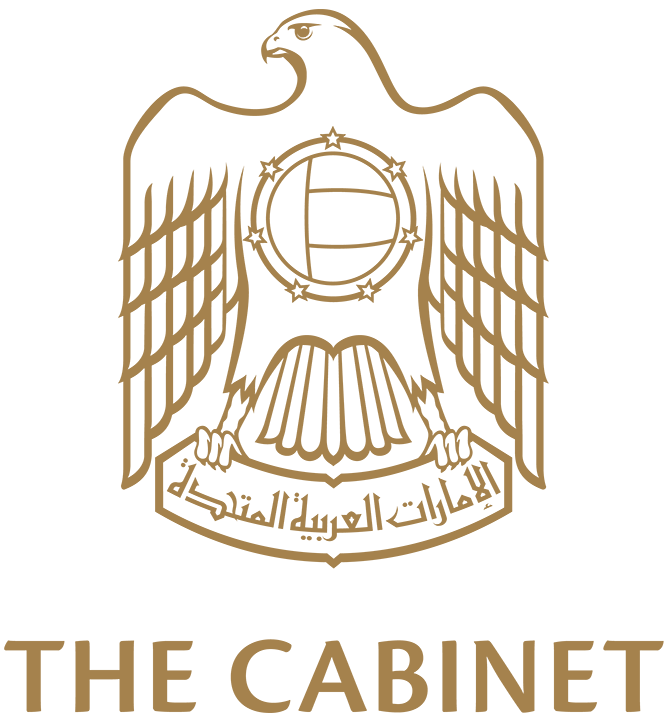Public Policy Document
Introduction
The National Child Protection Policy in Educational Institutions was issued in 2022 to protect children, enhance their well-being, provide social and psychological support, and offer post-care for cases of child abuse. Protecting and enhancing children’s welfare is the collective responsibility of everyone; every person who deals with children and their family has a role to play. To effectively honor this responsibility, every person dealing with a child must ensure that the welfare, wellbeing and best interests of the child operate as the primary and guiding focus of all dealings with the child.
The policy represents the Ministry of Education's full commitment to ensuring the well-being and safety of children, respecting their dignity, and providing an enjoyable and safe educational environment for every child without discrimination based on origin, gender, nationality, religious belief, social standing, or special needs. The provisions of the policy apply to public and private educational institutions across the UAE, whether the education is direct or remote.
Policy Objectives
- Ensure implementation of mechanisms and measures of child protection in educational institutions pursuant to the applicable legislations in the UAE and the international conventions in place.
- Determine the roles and responsibilities of all personnel working for the educational institutions, and all stakeholders, including parents, individuals, agencies, partners, and the relevant service providers.
- Create a safe and supportive school environment to protect the child against occurrences that can threaten the child’s survival and wellbeing in terms of physical, mental, intellectual, educational or moral health.
- Enable the child to exercise his/her rights, particularly educational rights and the right for protection pursuant to the provisions set out in the applicable legislations and the provisions of Federal Law No. (3) of 2016, its implementing regulation and the international conventions ratified by the UAE.
- Create a safe and confidential information reporting and complaints system for cases of potential or suspected child abuse or compromising of the child’s rights within an educational institution, the services and utilities provided by the educational institution, the transportation of children to and from the educational institutions, and any extracurricular activities organized by the educational institution or the Ministry.
- Provide the child with protection, social, and psychological support, as well as post-care in cases of child abuse.
- Enhance child welfare in all aspects.
- Foster and model positive behavior and the building of positive social school relationships.
- Promote the principle of tolerance among all members of the school community.
- Improve the competency of education professionals working in the field of child protection and bullying prevention.
- Foster child protection partnerships.
- Coordinate with the relevant bodies to safeguard the rights of all children in educational institutions.
Priorities & Key Components
The policy is based on four main principles:
- Ensure children’s best interests.
- Uphold ethical, behavioral, and professional values.
- Ensure injury prevention and protection of children from harm.
- Respect children's privacy and keep all sensitive information confidential.
Types of Child Abuse:
- Physical Abuse: Physical abuse means causing physical harm or injury to the child or failing to or being unwilling to prevent physical harm to the child.
- Sexual Abuse: Sexual abuse means forcing, attracting or enticing the child to take part in any sexual behavior, whether aware or not. It includes the practices that do not involve any physical contact, such as engaging children in watching or producing pornographic material, watching sexual intercourses or encouraging the children to act in a sexually inappropriate way.
- Psychological Abuse: Psychological abuse means dealing abusively with the child’s psychological state, causing severe and/or permanent harm and thus affecting the child’s psychological growth and development.
- Neglect: Neglect means the failure of parents or caregivers to take the necessary measures to protect the child's life, and to provide physical, psychological, mental and moral safety against danger, and/or to protect the rights of the child.
Rules and Provisions of Information Reporting in Educational Institutions:
- The Ministry or the competent authority shall be notified of any suspected critical abuse or one to which the student is exposed in, around or in the utilities of the educational institution campus, the transportation buses or camps and internal and external activities organized by an educational institution or the Ministry according to the applicable legislations and laws. In addition, registers shall be kept of all cases of reported abuse in educational institutions.
- The relevant bodies shall take the necessary measures to safeguard and protect children against substance abuse, including: using, contributing to producing, trading or trafficking narcotic, intoxicating and stimulant substances, or all types of psychotropic substances.
- The school health system shall be supported to carry out its role in prevention, treatment and health counseling.
- Any information provided in suspected cases of abuse is reported in complete confidence. The informant’s identity may not be disclosed against his/her will, and the identity of all the parties of the incident and witnesses shall not be disclosed in child abuse cases, when using the information in analyses, media reports, and no personally identifying material or information may be published.
- The leadership team of the educational institution shall cooperate with the approved child protection specialists, and shall facilitate tasks they are entrusted to carry out inside the educational institution, without any obstacle or hindrance that could result in delay in taking the necessary measures for reported cases or their follow-up.
Roles and Responsibilities:
Educational Institutions:
- The educational institution shall appoint a member of the administrative or educational staff to be responsible for child protection, and all that is related to the child’s rights and protection, in the educational institution. Such members shall be deemed as the reference for the child protection initiatives, activities, information and data that belong to the educational institution.
- The educational institution shall verify and screen the qualifications and backgrounds of employees and caregivers before appointing them in the educational institution.
- Child protection and the best interests of the child shall be prioritized in all decisions made, and all procedures carried out with respect to the child.
- All forms of violence shall be prohibited in the educational institution.
- The educational institution shall be fully responsible for creating a safe and secure environment for the child, in which the child feels protected against any occurrence that may threaten the child’s physical and mental health and against any form of abuse or exploitation.
- The educational institution shall circulate to all personnel working at the educational institution about confidentially secure information reporting procedures, and their responsibilities for reporting any abuse or suspected forms of abuse or violence towards a child or student.
- The educational institution shall launch secure and confidential information reporting channels for all personnel working for the educational institution, all students, and all parents.
- The educational institution shall spread awareness among students about child rights and the need to report any type of abuse or suspected abuse they or other students might be exposed to.
- The educational institution shall spread awareness among parents about child protection and the importance of their role in protecting children.
- The educational institution shall take all the necessary measures to safeguard and protect the children against substance abuse, including the use of narcotic, intoxicating and stimulant substances, all types of psychotropic substances, or the child’s involvement in their production or trafficking.
- The educational institution shall endeavor to detect cases of abuse early, identify the risk factors, develop the appropriate plans and programs for supporting the students through enhancing the competence of the child protection professionals in the institution and through the use of assessment tools for early intervention and awareness campaigns.
- The educational institution shall ensure that confidential information about every student is protected. Moreover, the educational institution shall not announce the names of students, their families or any sensitive or personal information that could harm the reputation of the child or his family.
- The educational institution shall obtain consent from a child’s parent when necessary to use the child’s personal photograph or any information via the media or for any other posts or publications.
- The personnel working for the educational institution may not share the personal or medical records of the students except in the following cases or with the following relevant persons and bodies
- Temporary referral or transfer for providing a specific treatment, carrying out diagnostic procedures or in cases of emergency.
- If there is any public health threat when negligence in submitting the information could cause to endanger the student or others and potentially lead to death, severe injury or infectious disease.
- When working with the Child Protection Unit.
- The educational institution staff shall never discuss any existing or closed cases with mass media or third parties, other employees or unauthorized persons, except when required to do so by investigative bodies and judicial bodies within the limits of legal liability.
- The educational institution shall supervise the implementation of vocational development plans, awareness-raising, training, and qualification programs for all the personnel, associates and partners in respect of all that is related to the child rights and protection, and types of child abuse. The educational institution shall also supervise the implementation of plans and tools for modifying children’s behavior, methods for dealing with child, training the children on applying the necessary skills to observe the indicators of abuse and means for protection against it.
- Ensure that all personnel working for the educational institution attend all training programs related to child protection.
- Respect social diversity and differences of all types: race, color, gender, religion, expatriates, mental, psychological, and physical capabilities of each student.
- Endeavor to achieve justice and equality in treatment for all students in the educational institution.
- Ensure proper treatment based on equity and respect for all students, by use of appropriate, courteous, and respectful language.
- Manage student behavior through role modeling appearance, behavior and positive situations that are appropriate and reflective of societal values.
- Apply the professional codes of conduct.
Parents:
- Be fully responsible towards the child and for the duties entrusted to them in the upbringing, care, guidance and growth of the child as stated in the applicable law and legislations in the country.
- Cooperate with the educational institution for creating a safe environment for the child in which the child feels protected against occurrences that may threaten the child’s survival, physical and mental health.
- Notify the educational institution or child protection units in case of an occurrence that may threaten the child’s safety, physical, or mental health.
- Positively cooperate with the educational institution or child protection units as required in any stage when dealing with a case of abuse where the parent’s children are involved.
Educational Authorities, Partners and Support Service Providers:
- Set the student’s best interests as the basis for dealing with students, and not using the situation or the students as a means to attain private goals or serve the interests of the institution at the expense of the students’ interest.
- Take the necessary response measures in respect of the complaints received from the Child Protection Unit at the Ministry, and provide the necessary support to all the reported cases of abuse.
- Take the necessary protection measures and provide the necessary support to all abuse cases of students/children referred from the Child Protection Unit at the Ministry.
- Maintain as confidential any common data and not disclose any information related to students.
- Suggest vocational development and training plans for the personnel working for the educational institution in the field of child protection.
- Contribute to implementing training programs for the child protection professionals and all the personnel working for the educational institution in the field of child protection.
- Participate in community awareness-raising campaigns in the field of child protection.
- Contribute to achieving social support to child protection programs in a safe school environment.
- Participate in the meetings held by the child protection committees and councils.
Child Protection Unit and Child Protection Professionals:
Child protection professionals shall, each within the limits of his duties and responsibilities, take the necessary protection measures if there is anything that threatens to compromise the child’s safety, physical, mental, psychological or moral health, without contradicting with Federal Law No. (3) of 2016 on Child Rights Law (Wadeema) and Cabinet Resolution No. (52) of 2018 on the implementing regulation of Federal Law No. (3) of 2016 regarding child’s rights. These measures shall be taken as follows:
- Remove the child from the abusive situation or location and place the child in a secure place to ensure his/her protection, at the discretion of the child protection specialists assessing the risk level surrounding the child.
- Conduct a comprehensive social investigation for the cases that threaten the child’s safety at the educational institution, in which the circumstances surrounding the child are explained. A report shall be submitted to the administrative authority to which the professional reports, accompanied by the recommendations about which necessary measures to take for the protection of the child.
- Coordinate with the relevant bodies for the psychological and physical rehabilitation of the child by the professionals. This may include professionals from other psychological and social agencies, or other specified agencies.
- Provide informative programs for child caregivers about the best treatment to ensure the support, normal growth and development of the child.
- Pay field visits to the child at the educational institution as required, to ensure that the child has the necessary support to solve any ongoing problems the child may have.
- Submit recommendations to the relevant authority for supporting the child’s family in the event that the social circumstances of the family have contributed to the condition of the child.
- Submit a report, to provide information about the circumstances surrounding the child, as required to assist prosecution or take the appropriate measures to protect the child, according to the provisions of the Law, within a period not exceeding twenty-four (24) hours after receiving the complaint.
The child protection professionals shall take the following preventive measures after obtaining the approval of the agency to which they report:
- Merge the child in the programs and activities that support the child against any problems or challenges the child encounters.
- Ensure the child and the family acquire the necessary skills for dealing with the problems through training courses and workshops.
- Coordinate with the relevant bodies to take the necessary measures for ensuring the protection of the child’s rights and safety.
- Guide and inform the child of potential dangers and risks related to certain activities that the child may continue to undertake
Expected Outcomes
- Provide a safe and nurturing school environment to protect children from any actions that threaten their survival or their physical, psychological, intellectual, educational, or moral wellbeing.
- Raise awareness of educational staff in educational institutions on aspects related to children’s rights and protection.
- Coordinate interaction in the field of child protection between national institutions and local levels entities.
- Provide an enjoyable and safe learning environment for every child without discrimination.
Target Audience
Students enrolled in public and private educational institutions, employees working in public and private educational institutions, child protection specialists, employees working at the Child Protection Unit at the Ministry of Education and other relevant authorities, partners, suppliers, and service providers to educational institutions.




